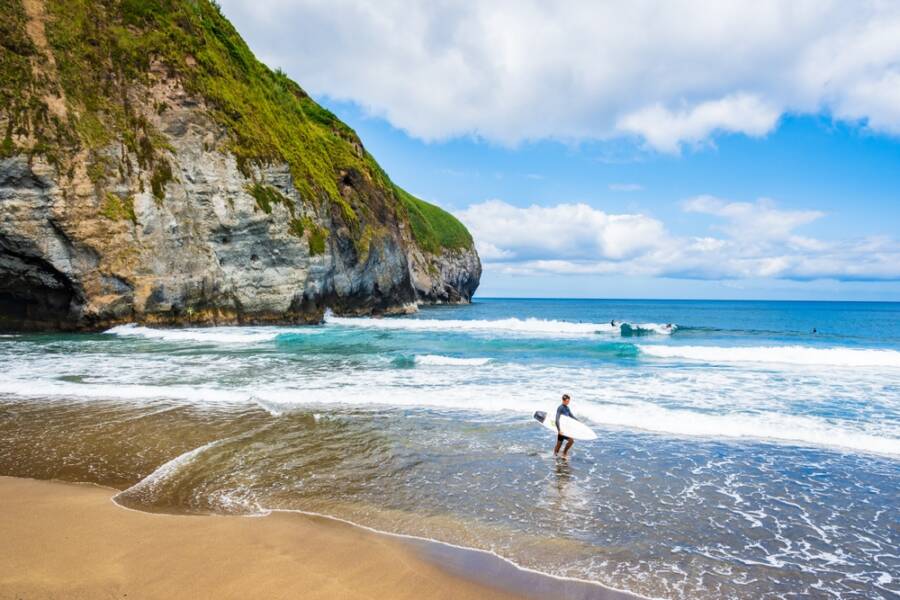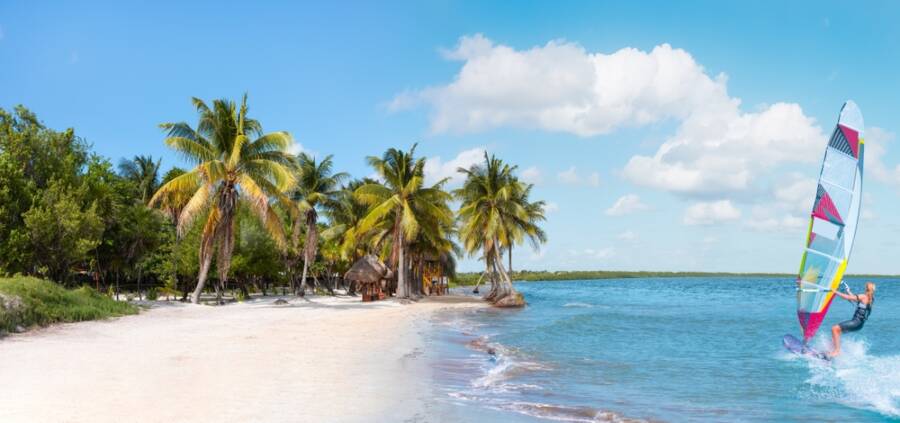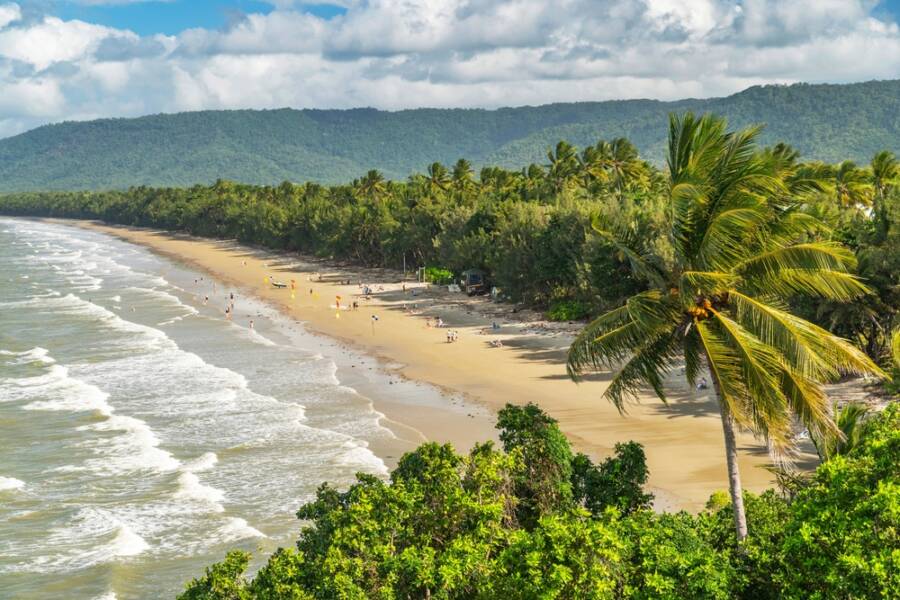Let’s face the tide: We might say goodbye to our shorelines
The future of many beloved beaches may be jeopardized as global sea levels continue to rise. By the end of this century, ocean levels had climbed by 10 to 12 inches. This apparently moderate increase had deep consequences, causing beaches to shrink. This is an average of one meter for every inch of sea level rise.
This situation may get even more complicated by human activities, as this disrupts natural coastal processes such as channel dredging, beach nourishment jetties, and seawalls. This is an impact resulting from multiple factors, such as the growing coastal erosion crisis, and the world’s most iconic beaches might be at risk.

These are some shorelines that require preservation and restoration efforts.
1. Santa Barbara, California
Celebrated as the “American Riviera,” its picturesque Spanish-Mediterranean architecture and palm-fringed beaches face coastal challenges as well. The beaches have been battered by the El Nino events that exacerbated the erosion. Moreover, the presence of seawalls, which were supposed to protect the shoreline, intensified wave action, accelerating beach loss.
Considering these issues, the natural flow of sediments was disrupted, and as a result, Goleta Bach Park ended up severely eroded, and Arroyo Burro Beach experienced similar problems. Santa Barbara’s beaches are now in a precarious position because of all the factors impacting them, and even if they are included in nourishment projects and coastal restoration initiatives, the issues here are formidably high and challenging. This situation highlights the importance of integrated strategies to react to both natural and human-induced factors to be able to protect the shoreline.
2. Montreal, New York
The installation of jetties meant to safeguard the beaches of East Hampton has consequences for the local coastal ecosystem. They obstructed the natural flow of sand on the Atlantic shore, leading to erosion of the beaches. Montauk’s beaches are now vulnerable to aggressive conditions such as winter storms and rising sea levels.
This issue goes beyond Montauk, with eroded shorelines from Sagaponack to Westhampton. Natural sand migration created a Domino effect, and now the coastal erosion is exacerbated throughout the region.
Efforts to address the problem have had mixed results. Local communities are concerned about the long-term sustainability of the solutions, and they are requesting a more balanced approach to consider both coastal protection and the natural dynamics of the sand. There’s a need for comprehensive strategies to restore beach habitats and mitigate erosion, more pressing than ever because the effects of human intervention and climate change represent a challenge to the resilience of these coastal areas.
3. Miami Beach
This iconic 10-mile beach flanked by luxury hotels and bustling nightlife has been involved in million-dollar nourishment projects. Despite efforts, including the “borrowing sand” practice, the beach still faces significant challenges.
There is ongoing erosion that has been exacerbated by tropical storms that destabilized the sand, making it difficult to maintain the beach. The local sand supply was not enough, so Miami Beach currently sources sand from other countries to sustain its coastline. The coastal erosion in the area is obvious, and it needs sustainable, long-term solutions.
Climate change as well as sea-level rises are the biggest threats to coastal areas worldwide, and the Miami Beach experience is one of the stark examples of how complex it is to preserve and manage urban shorelines.
4. Kololi Beach, The Gambia
Africa’s smallest mainland country on the Atlantic coastline comes with a serious erosion threat to its vital beach resort tourism sector.
A $20 million nourishment project of 328 feet of expansion of Kololi took place here, and after just 2 years, it eroded to 85 feet. The rising sea levels threaten not only the beach but the capital as well. Banjul is a city with potential flooding. The erosion here is too rapid, and there is an urgent need for solutions to safeguard the region’s coastal communities as well as the economic assets.
5. Waikiki Beach, Oahu, Hawaii
This beach in Honolulu faces challenges from rising sea levels and coastal erosion. Waikiki Beach is a densely populated and highly developed area. In 2010, a $2.5 million project addressed the erosion by adding sand sourced from offshore shoals. The project aimed to restore the beach with new sand to the existing sand to maintain its overall volume.
It’s still not obvious if the initiative was a success. The situation underscored the challenge of preserving the beach and the pressures of climate change, urban development, and the natural erosion process.
Monitoring and adapting management will be crucial to determining the efficacy of these restorations and shaping future strategies to protect the Hawaiian coastline.

6. Cancun, Mexico
The resort coast, frequently battered by Category 4 and 5 hurricanes, had experienced many beach restoration efforts. The projects involved replenishing the famous white sand beach with sand from the ocean floor.
This approach brought several issues, like the disruption of underwater ecosystems and coral reefs. The tall beachfront hotels in Cancun enhanced the problem by channeling the winds that were supposed to disperse over natural dunes, so the sand loss was accelerated. Intense hurricane activity, environmental damage, and ineffective strategies evidence the need to find sustainable coastal management practices for such a popular tourist destination.
7. Negril, Jamaica
Since the 1970s, this stunning Seven Mile Beach has attracted a source of resort development celebrating the pristine sands. This growth came with the cost of degradation of the coral reef, draining of wetlands, and dressing of seagrass beds.
The flat coastline is also frequently battered by tropical storms, making the erosion problem even more acute. With the years passing, the natural process struggles more with replenishing the eroding shoreline, making the need for coastal management practices absolutely urgent.
8. Pattaya Beach, Thailand
From 1952 to 1990, Pattaya Beach reduced its width to 13 to 16 feet, but it used to be a serene stretch of 118 feet. Naturally, the sand is supposed to replenish itself, and this process has been disrupted by the waves in the Gulf of Thailand, which don’t deposit sand to counteract the normal tidal erosion.
Because it’s a very populated area, this issue is intensified by foot traffic or jetskiers. Beachfront establishments have returned to poling sandbags to safeguard their businesses along the more and more narrow strips of sand. It’s imperative to find a coastal management strategy that addresses both human impact and the natural one to save this once beautiful beach.

9. Portsea Beach, Australia
In just a few months, this beloved peninsula beach had 49 feet washed away. Locals think the rapid erosion is related to a 2009 event that involved the dredging of the channel into Port Phillip Bay, intended to enhance the shipping for the Port of Melbourne.
With the hope of the return of lost sand, there are sandbags and piled boulders lining the remaining narrow strip of beach.
10. The Holderness Coast, Northeast England
Stretching 39 miles north of the Humber Estuary, the Holderness Coast is Europe’s fastest-eroding coastline. The North Sea’s waves are powerful enough to relentlessly pummel the soft clay cliffs.
At the base of these crumbling cliffs, there is an alarming erosion rate—nearly 6 feet per year. Groynes and other coastal defenses have been installed to shield the resort towns of Hornsea and Mappleton.
Unfortunately, the structures seemed to accelerate the problem because they deprived other areas of vital sand, increasing erosion along the coast. Here, there is a need for an immediate solution that is more effective and sustainable to balance the protection and preservation of the vulnerable shoreline.
Our recommendation is Coastal, by Gray Malin, a celebration book with stunning, never-before-seen photographs of breathtaking beaches along the US, from the East Coast to the West and Hawaii, plus some international ones. You can order it via Amazon, enjoy the beauty of nature, and keep it in your house.
Read next: 7 Things From Outer Space That Will Destroy the World














